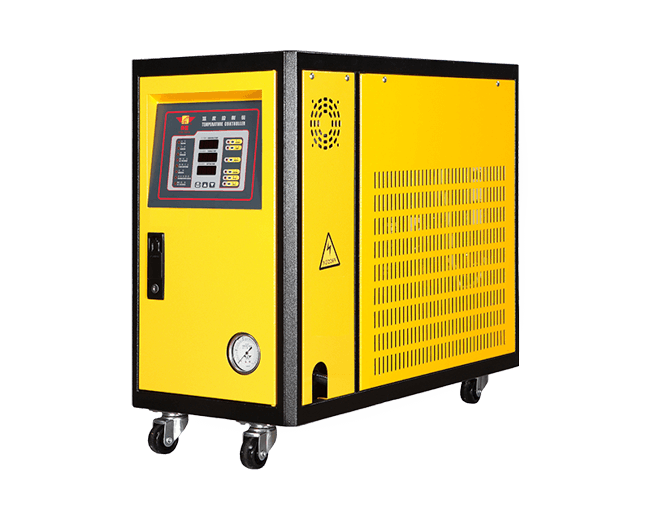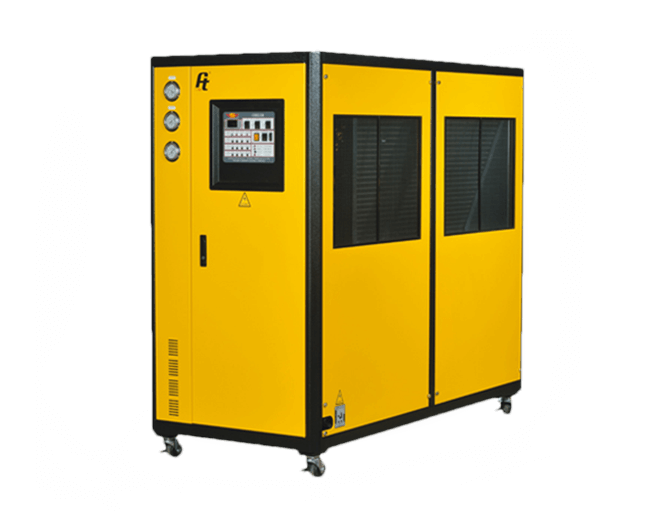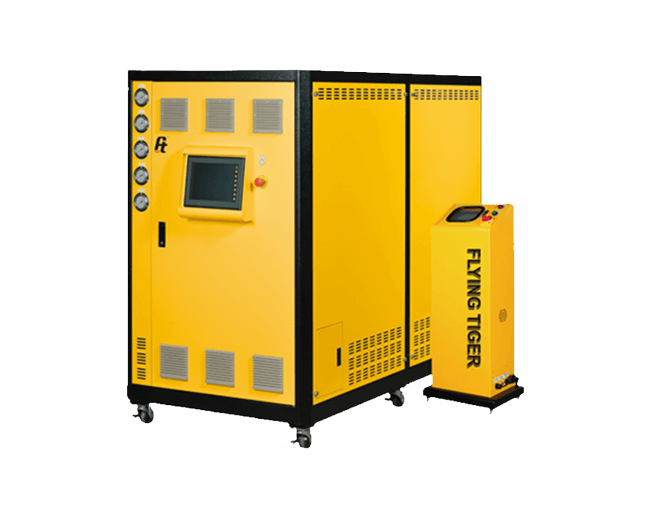Mold Temperature Controllers in Plastic Molding
In modern manufacturing, precision and efficiency are critical. As production methods evolve from traditional stamping to advanced molding and die casting, one component remains essential: the mold temp controller.
A mold temperature controller regulates and stabilizes the temperature of the mold throughout the molding process. By circulating heated or cooled liquid through the mold, it ensures consistent thermal conditions, helping to prevent defects, improve part quality, and shorten cycle times.
The Impact of Mold Temperature on Product Quality
Precise mold temperature control is critical to both the appearance and internal strength of molded parts. Temperature fluctuations directly impact key factors like shrinkage, porosity, and dimensional stability.
If the mold surface temperature is too high, parts can shrink or degrade due to thermal decomposition. If too low, parts may expand beyond specifications, leading to dimensional inaccuracies.
A mold temp controller maintains optimal mold temperatures throughout the process, minimizing defects, reducing dimensional errors, and ensuring consistent, high-quality production.
Traditional vs. Modern Mold Temperature Controllers
Mold temperature control technology has evolved significantly, with modern systems addressing key challenges that older models could not overcome. Today's mold temp controllers deliver improvements in energy efficiency, process stability, and precision—helping manufacturers achieve tighter tolerances, higher output, and better product quality.
Energy Efficiency
Earlier generations of mold temperature controllers prioritized basic heating and cooling without considering energy consumption. As a result, they operated inefficiently, consuming excessive amounts of energy and water.
Modern controllers are engineered for energy efficiency, using advanced thermal management and optimized flow systems to minimize resource usage while maintaining precise temperature control.
Process Stability
Maintaining stable mold temperatures is critical to consistent production quality. Traditional systems often allowed external factors to influence the molding process, leading to greater variability and unpredictable results.
Modern mold temp controllers integrate intelligent feedback systems and advanced sensors to ensure minimal temperature fluctuations, resulting in a more stable, repeatable process that improves overall product consistency.
Precision and Control
Older temperature control units offered limited precision, often leading to slight deviations that compromised the structural integrity and dimensional accuracy of molded parts.
Modern systems feature digital monitoring, programmable settings, and tight temperature tolerances. This advanced control capability ensures that molds stay within exact temperature ranges, enhancing product uniformity, reducing scrap, and improving production yields.
Industry Applications of Mold Temperature Controllers
Precise mold temperature control is critical for producing high-quality, reliable parts across key industries.
Automotive
Accurate mold temperatures ensure engine and structural components meet strict dimensional and performance standards, reducing assembly errors and improving durability.
Electronics
Stable thermal control prevents internal stresses and dimensional faults, ensuring electronic components maintain their electrical integrity and long-term reliability.
Medical Devices
Controlled molding conditions are essential for producing durable, biocompatible parts that meet the rigorous demands of medical applications.
Our Mold Temperature Solutions
We offer a full range of mold temperature controllers to meet diverse production needs. Each unit is engineered for precision, efficiency, and reliability across different molding applications.
Water Temperature Controller
- Features: Fast heat transfer, energy-efficient operation, compact design.
- Applications: Ideal for general plastic molding processes requiring mold temperatures up to moderate ranges.
Oil Temperature Controller
- Features: High-temperature capability, stable heat control, durable components for long service life.
- Applications: Suited for engineering plastics and processes demanding higher mold temperatures.
Water Cooling Dual Temperature Controller
- Features: Dual-zone control, independent operation, efficient water cooling system.
- Applications: Perfect for molds needing separate heating and cooling cycles to maintain tight tolerances.
Air Cooling Dual Temperature Controller
- Features: Dual-zone system with integrated air cooling, easy installation without an external water source.
- Applications: Ideal for facilities with limited water access or where mobility and flexibility are critical.
Hot-Cold Temp. Controller
- Features: Rapid heating and cooling switching, programmable temperature profiles, and advanced cycle control.
- Applications: Best for high-precision molding, improving surface quality, and reducing cycle times in demanding production environments.
Boost Your Production Efficiency with the Right Mold Temp Controller
Choosing the right mold temperature controller is critical to improving product quality, reducing defects, and maximizing operational efficiency. Whether you need fast cycle times, precise temperature control, or reliable performance under demanding conditions, Flying Tiger offers solutions built to perform.
Contact our expert team at Flying Tiger and explore more product details.



